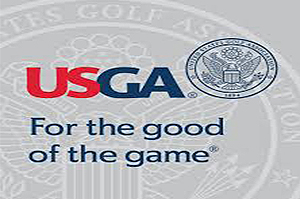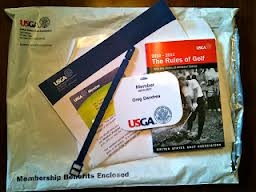By Adam Schupak @morningread.com
The U.S. Golf Association is disbanding its membership program and creating a development initiative aimed at raising $100 million, Morning Read has learned from multiple sources.
In its 40-plus years, the USGA Members Program had become the association’s third-largest profit center, behind only the lucrative broadcast-rights contract with Fox Sports and the Open championships. According to the 2016 USGA annual report available at USGA.org, revenue from memberships and member clubs totaled $17,576,000 of the USGA’s $202.2 million in total operating revenue.
Members paid a $10 annual subscription and received a personalized bag tag, a copy of the Rules of Golf, a U.S. Open-logoed hat and an e-newsletter, among other benefits. (The USGA Journal was shuttered 12 years ago.) For many, the bag tag was a proudly worn badge that identified them as golfers.
When reached for comment, USGA spokeswoman Janeen Driscoll said, “The USGA has no intention of eliminating the members program,” and noted that renewals are out and hats are being mailed to members.
This wouldn’t be the first time that the USGA tried to rebut a media report about one of its championships or programs before announcing the news on its own terms. When Golfweek reported in 2015 that the USGA would establish a U.S. Senior Women’s Open, officials declined to acknowledge the event before making an announcement one month later.
A USGA switchboard operator confirmed Tuesday that Fiona Dolan, the USGA’s senior director of member programs since 2003, no longer was employed. Sources said another part-time membership position had been eliminated. When contacted by Morning Read, Dolan would not respond to questions.
From the Members Program’s inception in the mid-1970s until his death in September, Arnold Palmer served as the national volunteer chairman. On Dec. 18, 1975, Palmer delivered a USGA bag tag to the program’s first “associate” member: President Gerald Ford. The program’s sliding membership during the past 10 years has mirrored the game’s falling participation rates. Last year, 650,000 members were enrolled, down from more than 900,000 reported in a Golfweek story in 2008. That’s fewer than 3 percent of the 26 million U.S. golfers counted by the National Golf Foundation.
The USGA program never could hit its goal of 1 million members. More than one outside consultant was contracted to help jumpstart the initiative. Seemingly with every new president, the association changed its strategy on whether it wanted to grow or maintain its current figures, and whether it should increase or lower dues.
Recognizing that its direct-mail model had become dated, the USGA attempted to use its website to communicate with a younger audience, but it failed to make a smooth transition into the digital space. Efforts to marry the program with handicapping failed to achieve the desired results.
“Try as they might, the USGA hasn’t been able to grow it in any meaningful way for at least 20 years,” said a former USGA executive, who spoke on condition of anonymity.
It is unclear whether the USGA will serve up a new incarnation of a consumer-engagement program for the average golfer.
“Given what you’ve told me, I have to think they have some other form of reaching the individual member in mind,” said David Fay, the USGA’s former executive director.
In an end-of-year video that still was playing on the USGA website, executive director Mike Davis called the members “our most passionate supporters.” It’s all the more reason why this is another head-scratching move by the USGA that seems likely to create a greater disconnect between the recreational golfer and its national governing body and in contrast with the USGA’s stated goal to “grow the game.”




